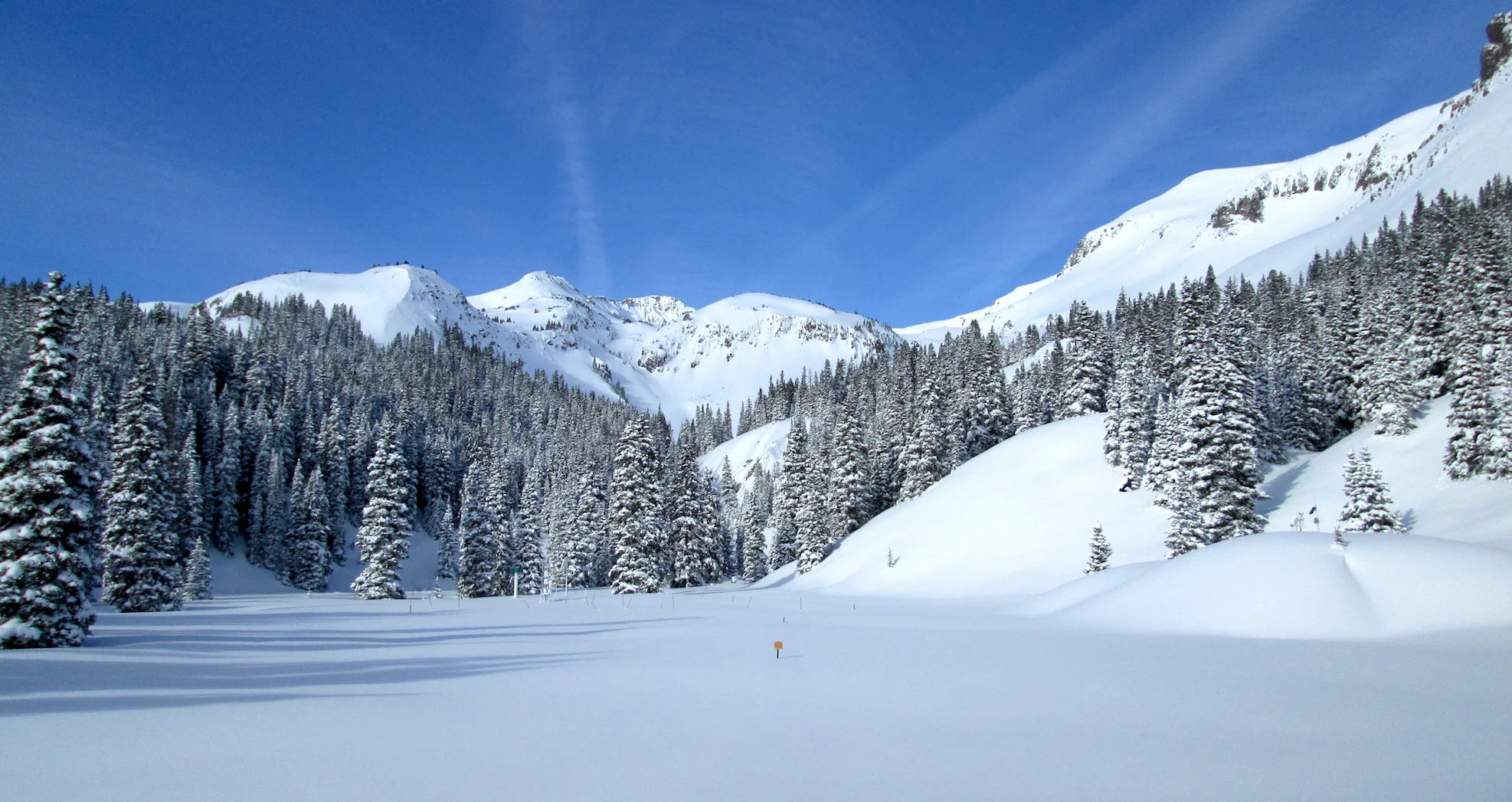CODOS Update November 24, 2020: Winter Outlook, Dust Event #1, WY2021 Research in Senator Beck, Colorado Gives
Greetings from Silverton,
We hope you all are well after another record breaking hot and smoky summer/autumn alongside a pandemic that is reaching new heights. So far we have received 5.5” precipitation in Senator Beck Study Basin since the start of the water year (October 1) which has largely been a continuation of the dry/hot summer. We have had a few early season storms that have offered hope, a storm October 25-26 and November 7-9 storm totaled 3.8” precipitation and currently a storm is passing through Colorado that has given us 1” precip over the last couple days.
The outlook for winter centers on the ENSO forecast calling for moderate or possibly strong La Niña conditions. The image below illustrates what that might mean in terms of precipitation around the globe. With Colorado sitting in the transition zone, La Niña can generally mean wetter and cooler towards Northern Colorado and dryer and warmer towards Southern Colorado.
Below: Comparison of current drought conditions with this time last year. Winter 2019/20 was cut short last year with hardly any precipitation from April onwards. This, and a huge soil moisture deficit took a big bite out of streamflows. Similarly, it will take a big snowpack to replenish the very thirsty soils come this springtime. Currently streamflows are at or near record low levels (NRCS image below). Since October 1 most states in the West have received a small fraction of normal precipitation, with a central north-south spine in the Colorado Mountains faring only slightly better.
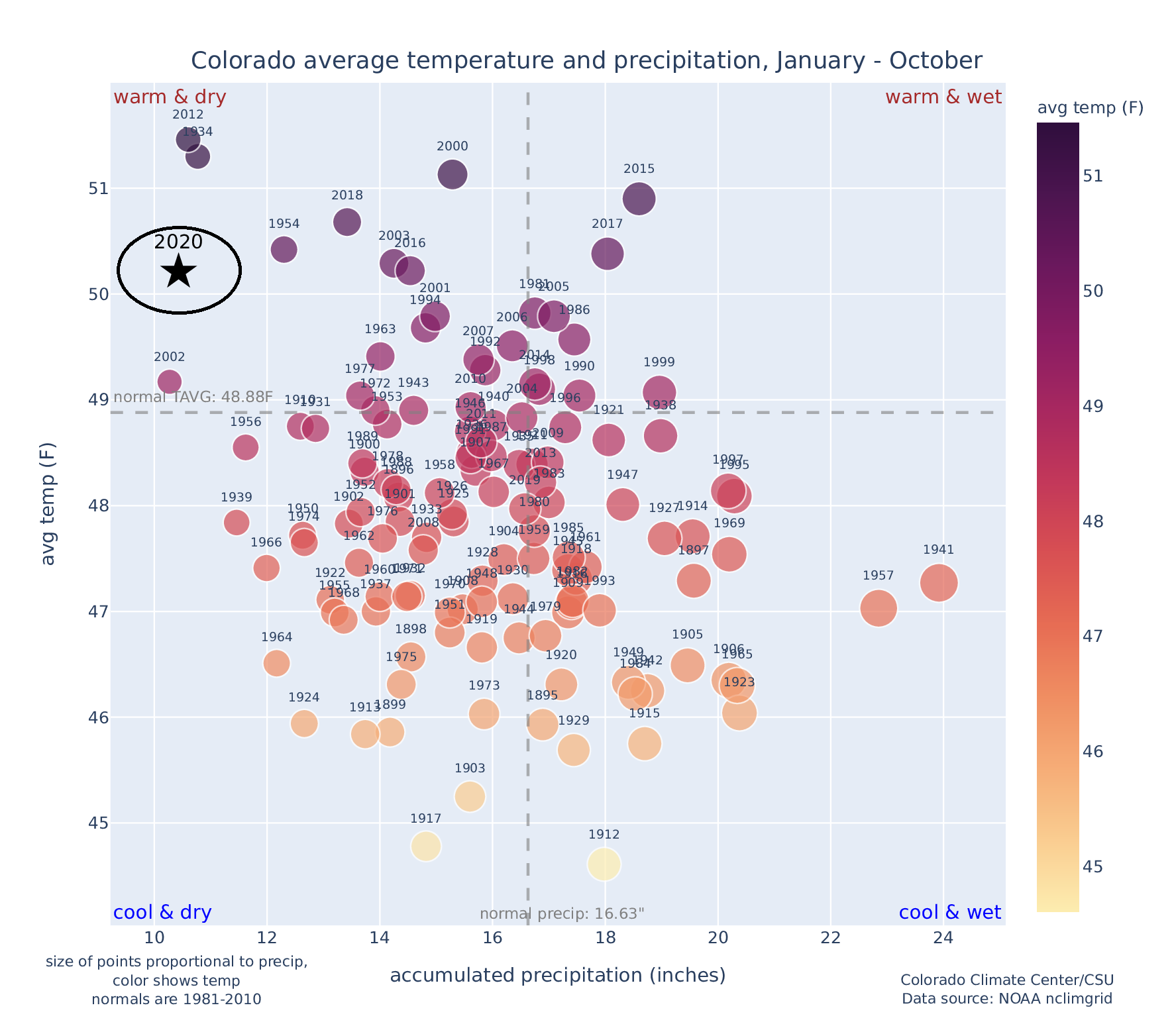
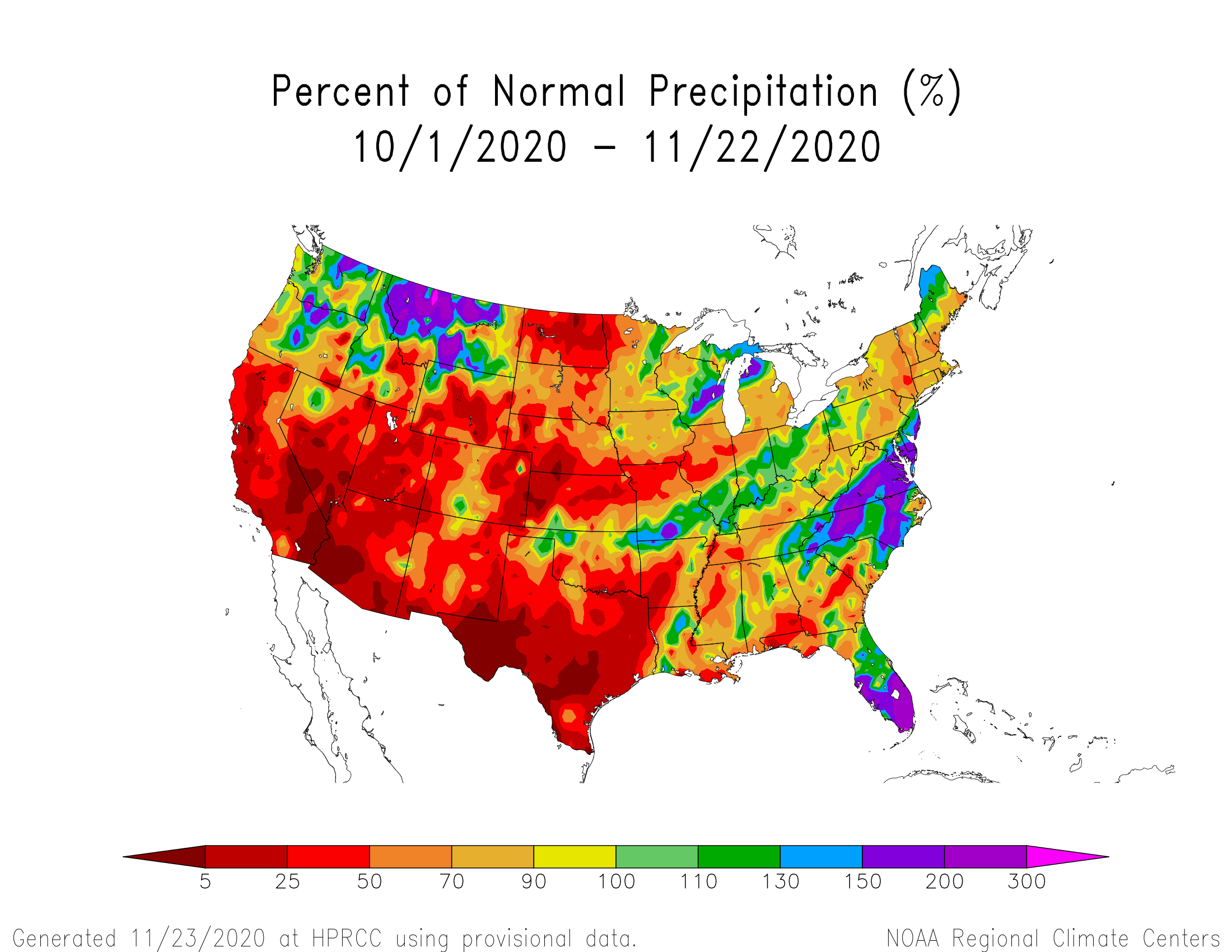


Dust Event #1 for WY2021 in the Log Books:
Our first winter storm in the San Juans occurred October 25-26. The early season storm track kicked up a wall of dust in the Four Corners Region and when it arrived at Red Mountain Pass we recorded gusts over 100 mph at our Putney station. We track dust events that occur during the snow season so this marks dust event #1 (D1) in our record keeping. Much of the snow from that storm has largely ablated leaving the dust on or near ground.
We all know how difficult it is predicting precipitation for a winter season, and it is just as hard or harder trying to predict dust-on-snow severity. But going into this winter with most areas in Extreme or Exceptional drought does not bode well in terms of the likelihood of dust mobilizing should a storm system pass through a dust source area. Other factors are important to consider such as soil stability (protective crust) and disturbance, but it is unlikely that overall conditions in the source regions have significantly changed much on this matter. If dust source regions remain dry then storm systems out of these areas this winter are likely to include dust along with it.
Below: The pictures below were taken by my wife while driving through northern Arizona on October 25th. Shiprock is barely discernable in the wall of dust.
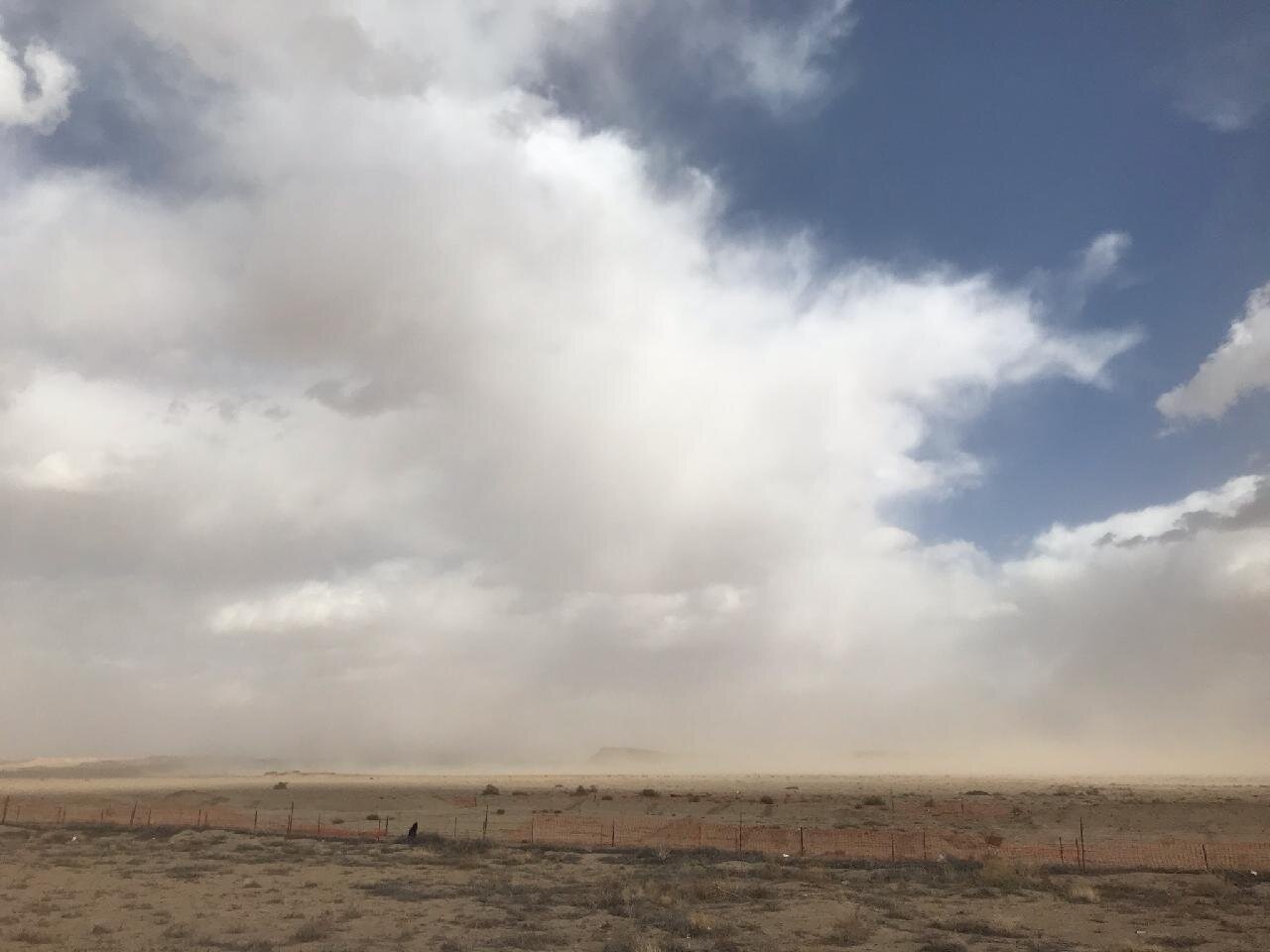
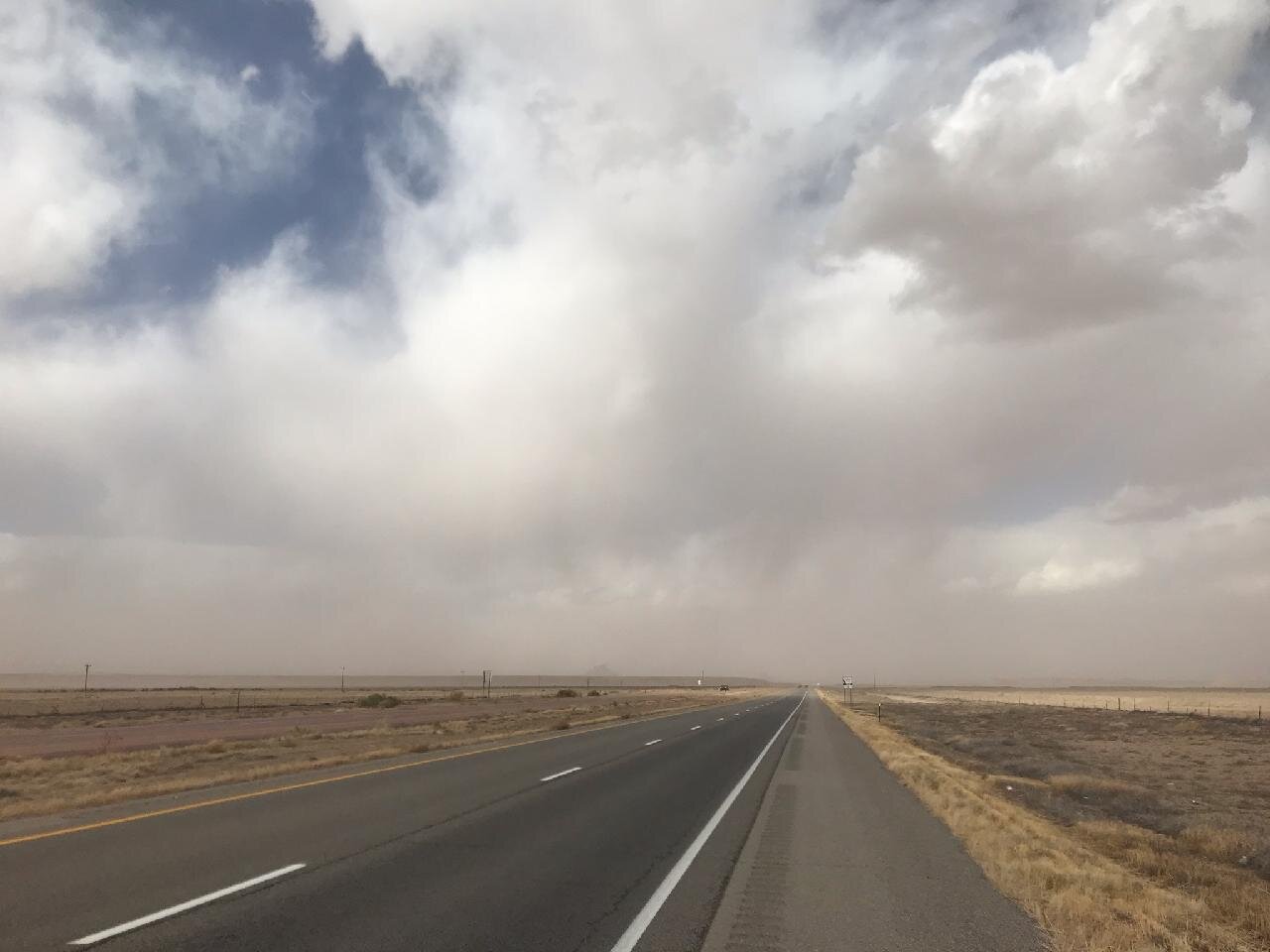
Dust, everywhere…….
Nearly every corner of the earth receives dust at some point from a near or far source region, a few examples are:
Residents of Fort Collins woke up to dust/ash in the air during a windy weekend following the Cameron Peak Fire.
The Colorado Sun reported on air quality issues and increasing asthma rates in the San Luis Valley. On our Colorado Dust-on-Snow tours it is not uncommon to see an extra dust layer or two in the Rio Grande watershed from down Valley.
This link shows a dust storm in the Gulf of Alaska originating from glacial flour in the Copper River Valley.
We posted this video a couple years ago of Sahara dust in eastern Europe during winter.
Himalayan glaciers are seeing increased melt due to dust.
Research in Senator Beck winter 2020/21:
Once again we are excited about the scheduled research activity in SBB this winter. We will host the SnowEx campaign for a third season. NASA wants to develop a snow-sensing satellite and they are developing the instrumentation and know-how in SBB. NASA will fly over the Basin once every couple weeks starting in January going thru the melt season collecting airborne snow data while folks in the field collect ground-based data. Senator Beck has been part of the SnowEx project since its inception and first field season in winter 2016/17.
We are also very excited to see Zoe Courville from Cold Regions Research and Engineering Laboratory returning for another season. She is doing some really interesting research looking at dust-in-snow, microbes in dust, snow surface roughness and subsequent melt rates through sublimation and evaporation. Her team has already published some results with much more in the pipeline.
Becoming more and more relevant in our mountains, next summer we are teaming up with Colorado State University researchers to assess the contribution of wetlands to streamflow in late summer. The inspiration came while observing over the last three years that the stream in SBB was completely dry in late summer except for where it ran adjacent to the Swamp Angel wetland near the outlet of the watershed.
There is always a plethora of on-going monitoring and research activities taking place in SBB as well as modeling and data analysis offsite, for example our station data is used with numerous investigations related to SnowEx, ASO developed their instrumentation/methodology in SBB and use our data to test modeling products, and the USGS is starting a new snow hydrology modeling effort in the Upper Colorado Basin using SBB data.
What are you doing December 2th? watch the dissertation defense of Stephanie Arcusa of her PhD thesis “Dust-drought nexus in the southern Rocky Mountains: integrating lake paleodust records and climate models.”
Support Center for Snow:
This holiday season please consider supporting Center for Snow and become part of the team working to monitor and study our high mountains, documenting climate change and its impacts. Your donations are tax deductible, and contributions of $100 or more also qualify for a 25% tax credit against your Colorado income taxes.
Your participation will:
Operate the Senator Beck Study Basin and keep the near 20-year energy balance and climate station network data record flowing.
Support dust-on-snow observations and reporting across Colorado.
Support state-of-the-science research and modeling efforts
You can donate on the CSAS website or by mailing a check to Center for Snow and Avalanche Studies, PO Box 190, Silverton, CO 81433.
Please take advantage of the online giving opportunity of Colorado Gives Day on Tuesday, Dec. 8, when your donation will be increased by an incentive offered by Community First Foundation. Instead of trying to remember, you can schedule your donation on your calendar now.
Take Care,
Jeff Derry

